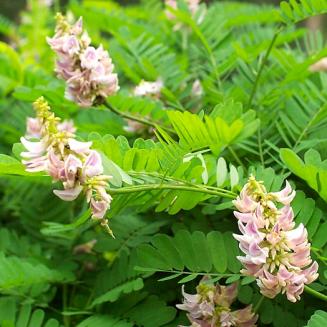SPECIFICATION
English names:
Jequirity, Indian liquorice, wild liquorice, crab-eye vine, coral pea, prayer beads, rosary pea.
Description:
Beautiful perennial climber. Young twigs covered with sparse villi. Leaves paripinnate, alternate; leaflets opposite, increasing slightly in size from the base. Inflorescence in axillary pendunculate raceme; flowers pink. Pod turgid, with a sharp deflected beak. Seeds 3-7, ovoid, bright scarlet with a black spot at the hilum.
Flowering period: June - August.
Distribution: Grows wild in mountainous regions; also cultivated.
Parts used: The roots, leaves and stem are collected in autumn during the flowering period. They are used fresh or dried. The seeds are toxic and only used externally.
Chemical composition:
The seeds contain a toxalbumin: (L+) abrin, a glucoside: abralin, a haemagglutinin; N-methyltryptophan and urease. The roots and leafy stems contain glycyrrhizin.
Therapeutic uses:
The roots, the stem and the leaves are effective in the treatment of coryza, cough, fever, jaundice resulting from viral hepatitis, and intoxications. They are used as an edulcorating agent in composite recipes.
The daily dose is 8 to 16g in the form of a decoction. The seeds, very toxic, are applied externally in an antiseptic and anti-inflammatory poultice to accelerate the bursting of boils and to cure mastitis and galactophoritis.
